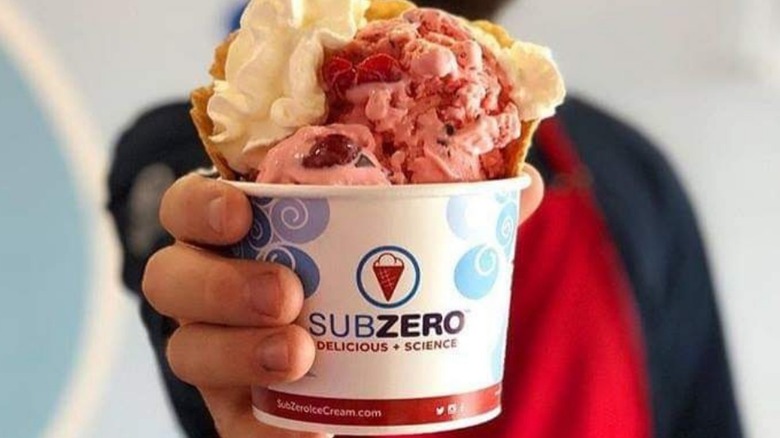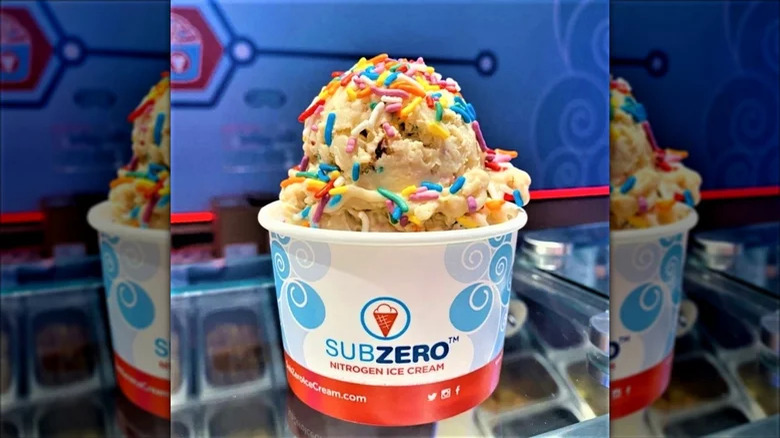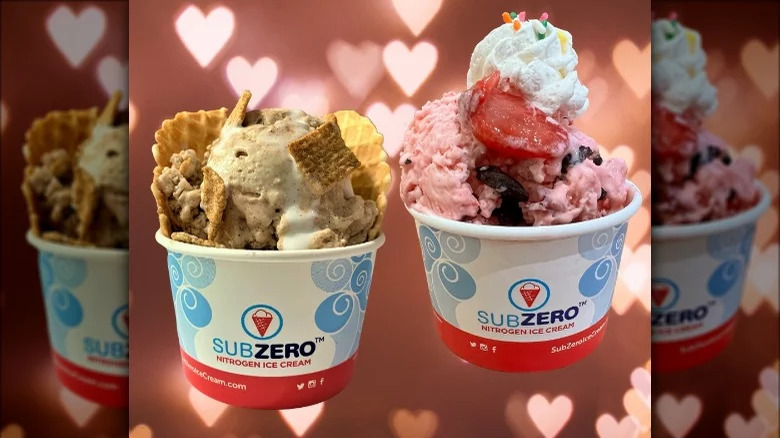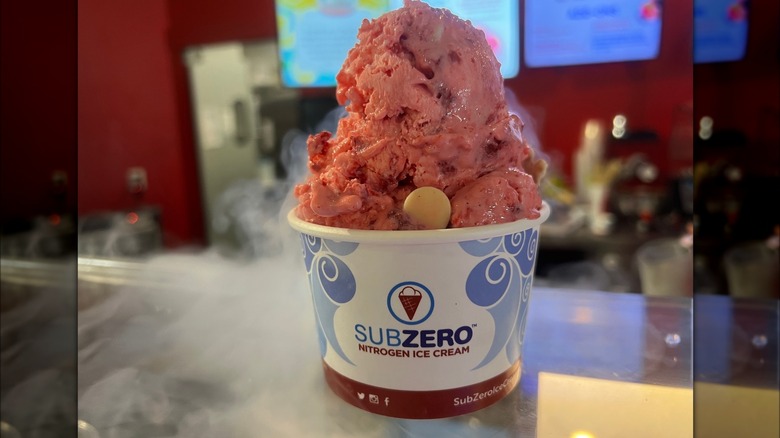Here's What Happened To Sub Zero Ice Cream After Shark Tank
There are usually two kinds of businesses you see on "Shark Tank." The first are those that get a Shark to invest, go on to great success, and maybe even become a household name (like the Scrub Daddy, one of the best kitchen tools we've seen on Shark Tank). Then, there are entrepreneurs who go in, give it their all, get rejected, and disappear. But not every business that fails to capture a Shark's investment is doomed to obscurity. In fact, some businesses that were rejected by the investor panel go on to thrive.
Hosts Barbara Corcoran, Mark Cuban, and Kevin "Mr. Wonderful" O'Leary may not have thought Teaspressa was worth an investment, but it's still kicking, with products now sold at Anthropologie and Nordstrom. Then, there were Stasher Bags, a brand of reusable silicone bags. The company's founder ended up turning down the investment offer they got on "Shark Tank." However, in 2019, the company was acquired by SC Johnson. But what happened to Sub Zero Ice Cream? The company appeared on "Shark Tank" in 2013 and failed to get an offer from the Sharks. Did it disappear, like so many other businesses, or is it flourishing?
Sub Zero Ice Cream uses a patented freezing process
Sub Zero is an ice cream company with a unique process. Rather than churning big batches of ice cream and scooping it for customers, the brand allows patrons to choose a flavor base that's added to fresh cream, mix-ins, and toppings. Next, their custom ice cream is made right then and there, thanks to a blast of liquid nitrogen. One look at the menu shows just how many customization options there are. The nitrogen rapidly freezes the selected mixture to -321 degrees Fahrenheit. The process was dreamt up and patented by company co-founders Jerry and Naomi Hancock.
Though Jerry Hancock became a nitrogen ice cream peddler, he has a chemistry degree from Brigham Young University and has worked in design and sales. Sounds like the perfect combination of skills to create a science-based ice cream chain, right? Hancock's proprietary ice cream freezing method was patented in 2014, a year after the brand pitched to "Shark Tank." Would patenting it beforehand have made a difference? We'll never know. Even though the brand didn't convince any Sharks to invest, these days, the company is flourishing.
Sub Zero Ice Cream flourished after Shark Tank
Fans of Sub Zero Ice Cream's appearance on "Shark Tank" can breathe a sigh of relief. The company has thrived since appearing on the series back in 2013. It was awarded a patent for its ice cream serving and freezing process in 2014. Better yet, it applied retroactively, covering all previous proprietary claims. Getting a patent is important because it keeps others from being able to use your process or invention, ensuring a business remains unique. Having a novel spin was what the Hancocks based their entire business on after getting advice from ice cream manufacturers. With the patent, a key piece of their business puzzle was finally in place.
Sub Zero's expansion can be attributed to its position as a franchisor. The company had 18 franchises when it was showcased on "Shark Tank," a number which is now in the hundreds. Sub Zero is always looking for franchisees, too, so fans might see even more locations pop up soon.
What's next for Sub Zero Ice Cream?
Sub Zero Ice Cream is proof that even if a business fails to get an investment on "Shark Tank," it's not doomed to fail. A decade after its rejection, Sub Zero Ice Cream has established itself as much more than an ice cream brand with a twist. By appealing to franchisees with its flash-freezing method, which allows folks to open an ice cream parlor without the need for freezers, Sub Zero has ensured its stores can easily pop up just about anywhere. It also offers a catering package, providing its treats to all kinds of events from corporate parties to weddings.
With its foothold firmly established, the next step for Sub Zero Ice Cream still appears to be expansion — but of a different kind. The company is teasing new flavors on its Instagram, and participating locations can even whip up a nitrogen ice cream cake or an acai bowl. This indicates that the company's focus has shifted to its menu and how it can be built upon. Could Sub Zero have its eye on the dessert industry as a whole after carving out its place in the world of ice cream? Time will tell.



